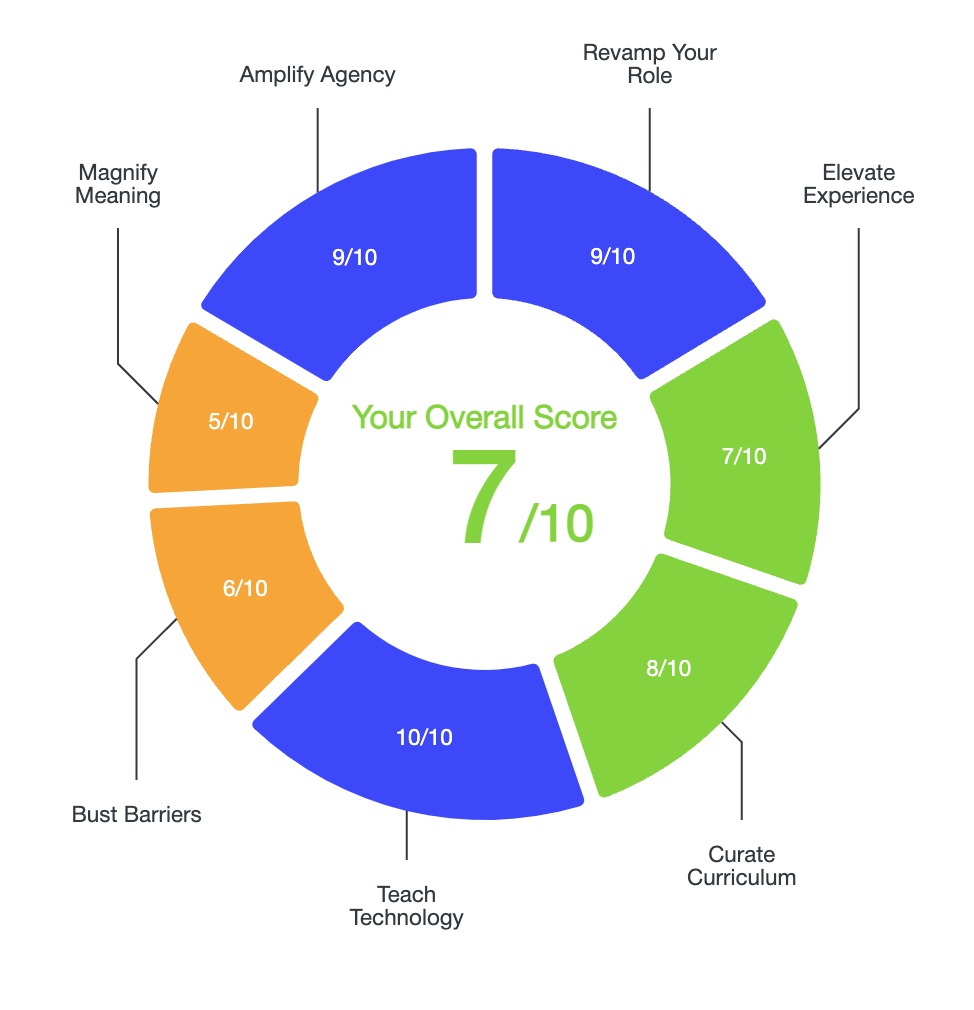Making digital books in the classroom provides students with a way to show their knowledge in a creative way while also learning 21st century skills. Digital books made with Book Creator are fully customizable, and in addition to words and pictures, students can also add drawings, audio files, and videos to communicate their message.
Best of all, once created, digital books can be shared in an online library with the rest of the class, shared with families, or even published to the outside world!
How to Use Digital Books
Teachers can use digital books across grade levels and subject areas. If you’ve previously assigned essays, reports, or presentations, any of those assignments could be made into a digital book. Students can make digital books in order to create:
- Biographies of a famous person
- Explanations of subject matter
- Synthesis of a topic studied
- Research projects on any topic
- Argumentative pieces
- Fictional stories
And digital books help students practice numerous academic skills such as:
- Summarizing and synthesizing information
- Clearly and concisely communicating information
- Choosing the right multimedia tools to support and enhance points
- Making intentional design choices
- Writing for a target audience
Setting Students Up to Make Digital Books
Just like making digital comics, green screen videos, or other creative tech projects, students are going to get a lot more out of making digital books if you invest time in preparing students to create ebooks rather than launching straight into using the program.
When I first roll out digital books with students, I start by investing them in making digital books by showing them examples of professional ebooks, doing a quick demo of some of the features of the program, and explaining that we’ll be publishing the books in a library for everyone to share.
Depending on the breadth of the topic, we’ll spend a few days researching and gathering information. Then, once students have their content, I’ll have them use a planning document to think through the composition of their books, as well as the content and multimedia they plan to use.
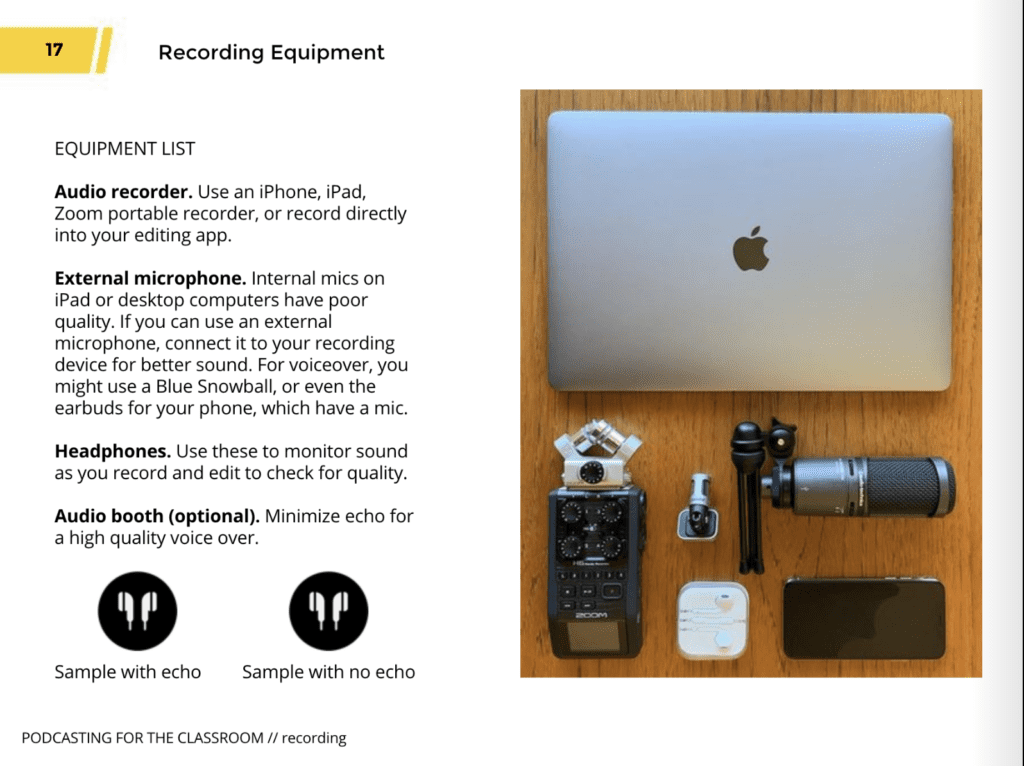
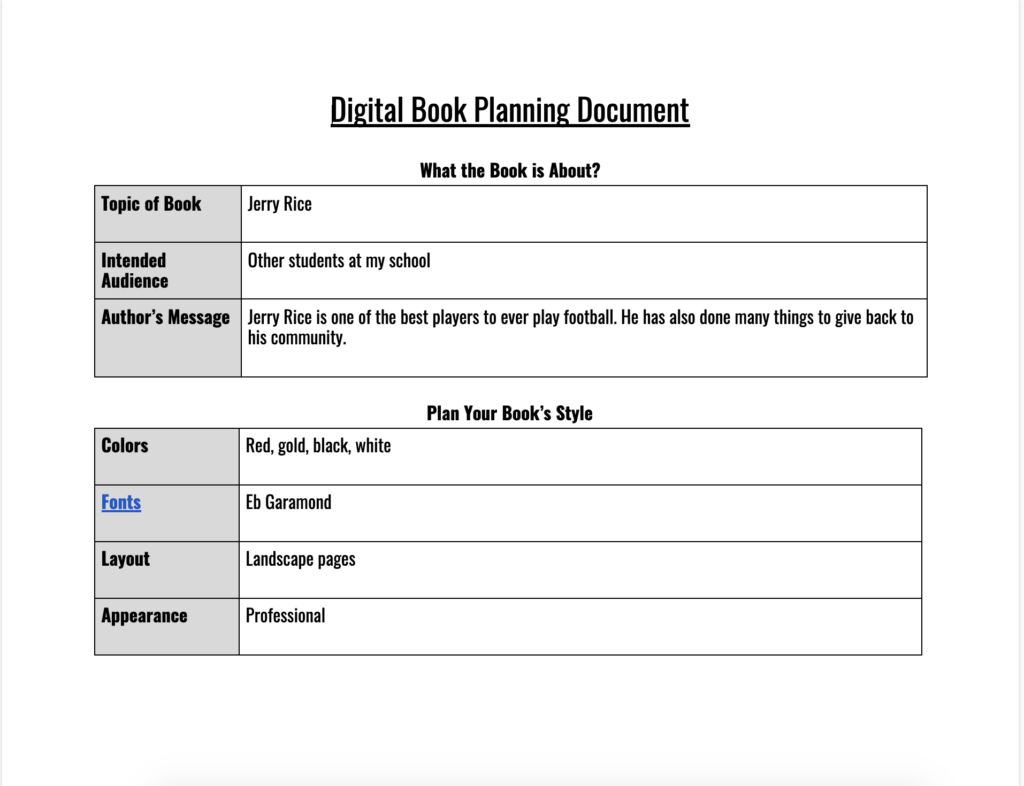
Teach Layout, Composition, Color Scheme, & Font Choice
Before having students start making digital books, I highly recommend that you first play around with Book Creator’s features yourself, and then create a video tutorial (or use mine) to teach them how to use the features in order to avoid the stress of trying to teach a new tech program to students with different learning needs and skill levels at the same time.
Before my students work on making their books, I also teach students the basics of composition. Here, rather than just jumping in and adding content, we discuss the importance of layout, font choice, thematic colors, and style. Since I teach Middle School, it’s often the first time students have thought intentionally about composition. Here, I’ll specifically teach students to consider:
- Layout: We’ll look at different ways of organizing text and other media on the page for aesthetic appeal and readability. Book Creator also has aligned tools that students should utilize to increase visual appeal.
- Background: Students can choose from lots of different types of backgrounds. We’ll discuss why a particular background (solid color, texture, comic, pattern) might be more effective than another depending on the content.
- Font: Students can choose from a variety of different fonts in Book Creator. In class we will discuss the importance of picking a readable font, using a font consistently throughout the book (or at least compatible fonts), being purposeful about font size, and compatibility of fonts within font families.
- Color Scheme: Students think about what kinds of colors they want to include in their books and make sure their schemes match what they are trying to communicate. Then, they should be sure to be consistent with their scheme.
Teach How & Why to Use Multimedia
The ability to include multimedia is the distinguishing feature of a digital book compared with a traditional book. Thus, the most important element of teaching digital books is showing students how to include multimedia, as well as teaching why certain media would be more appropriate for communicating certain types of information.
- Text: Students are obviously used to including text in a written assignment, but might not have ever thought about how to be intentional with the amount of text they use, and might not be as familiar with other ways of using text, such as creating image captions, writing headers to signal main ideas, creating meaningful titles, or even purposefully limiting the use of text.
- Pictures: Images are likely the form of media students will be familiar with using. Here, you can discuss how images reinforce ideas or help a reader visualize what the author is communicating. This is also a great time to introduce students to websites like Pixabay or Unsplash, where they can access free images that are safe for copyright reuse.
- Videos: Videos reinforce content in meaningful ways. If, for example, a student is writing a digital book about a famous person, they could include video clips of that person. If a student is making a digital book about a topic like whether or not homework should be banned, they could interview other students or teachers on video and include those videos in their books. If using a longer video, I’ll direct students to indicate to their readers the relevant timestamp of the video.
- Drawings: Adding drawings to digital books is one of the best ways for students to incorporate their unique styles to their books. Drawings can be sketches of characters, scenes, or even creative designs.
- Audio: In my experience, students are the least familiar with using audio files in school projects. When making a digital book, students can include an audio file of an interview of another person, or they could include their own voice-over explaining a subject, as a replacement of text. Students can also use audio to speak from the perspective of a character in their book and embed that file in combination with a dialogue bubble.
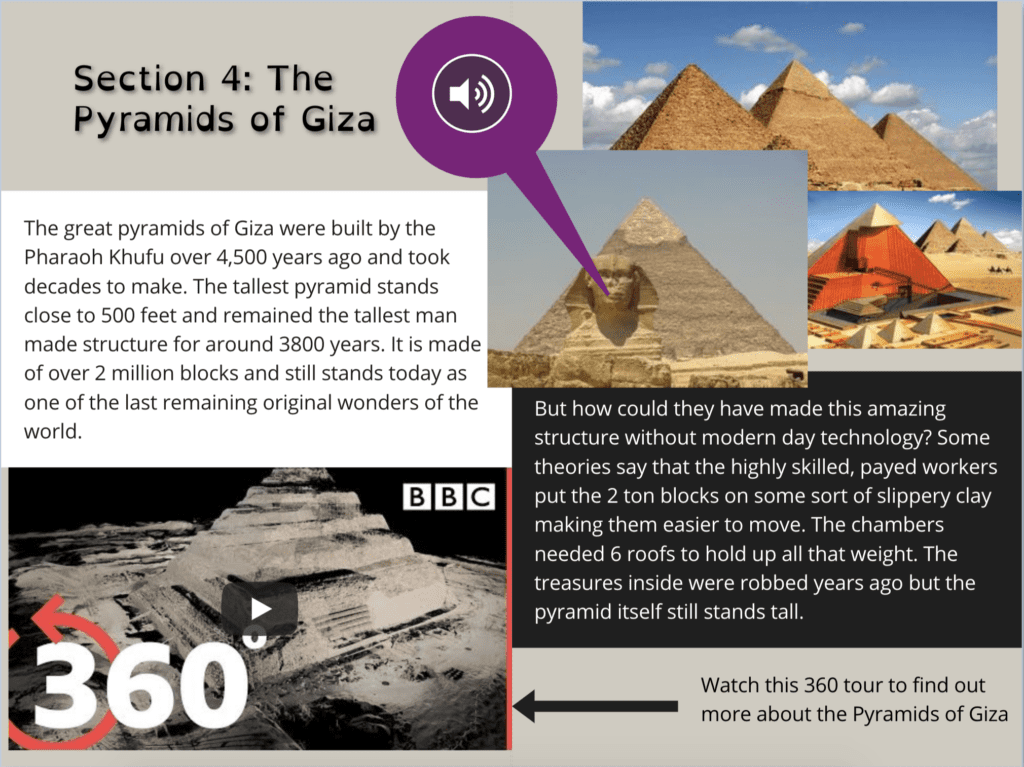
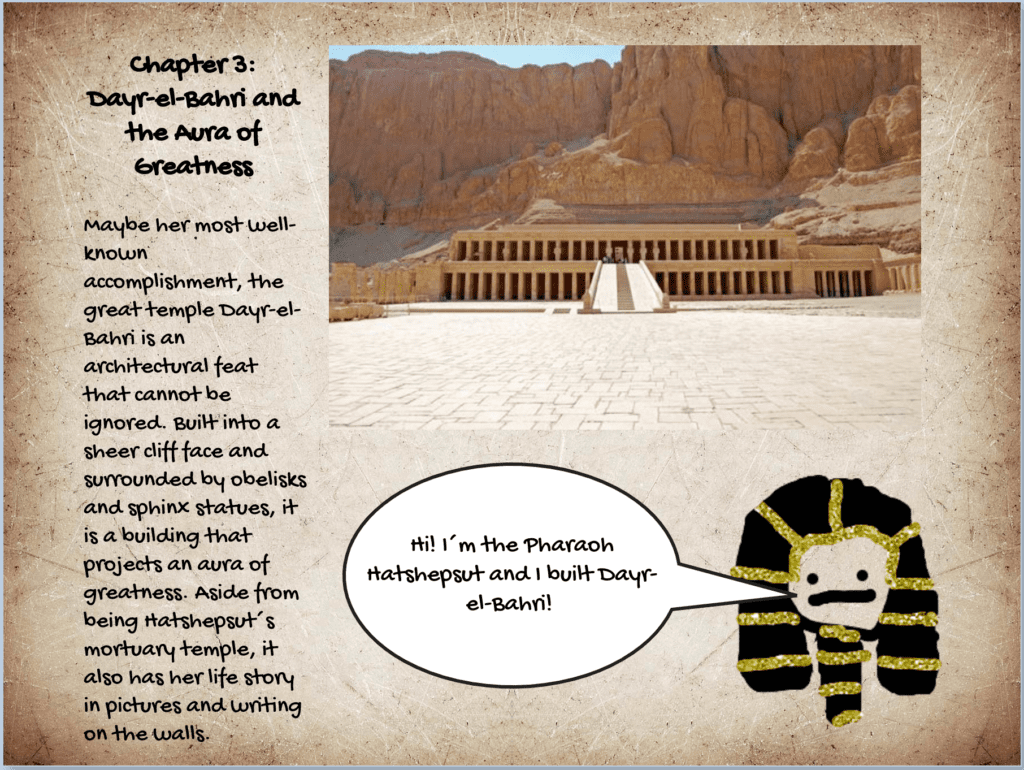
Drafting, Editing, and Publishing Digital Books
As with other projects, you’ll want to teach students how to draft and edit their work prior to publication. Here, you can give students a copy of the final rubric, have them self-assess, and then have them peer-edit each other’s work prior to publication. Drafting and editing shouldn’t be limited to content and grammar/spelling: students will also likely need to revise their work for arrangement and style in order to increase visual appeal.
Once published, an important, but often neglected step is to take time to have students read each other’s digital books and give each other feedback. I’ve definitely been guilty of skipping this step, but making sure you take the time to have students showcase their work will help them understand that the work they create is meaningful, and that the purpose of creating is to share your work with others. At minimum, set aside time for students to read each other’s books in the class digital library. Students can also share the links to their ebooks with others outside of class, which is another great opportunity to build an understanding that content is made to be published.
Another way to have students share their work and reflect on it is to have them upload their ebooks to their digital portfolios so they can reflect on the process and share their work with their families.
After students have completed their projects, it’s important to give them timely and specific feedback. I use the following four-point rubric in order to give them targeted feedback they can use in order to understand what they are doing well, and what they could do to improve.
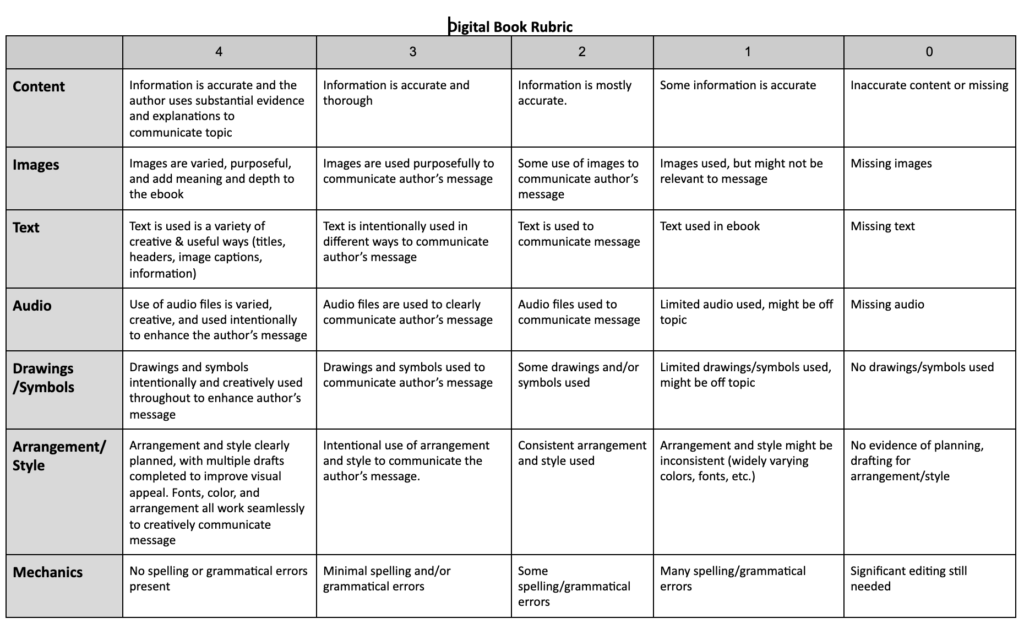
Conclusion
Once students know how to make digital books, you can add it them to the menu of creative choices students have to show their understanding. Digital books are a great way to teach students about the importance of composition and style, as well as how and why to include multimedia to communicate a message.
For additional strategies for increasing autonomy, creativity, engagement, and academic rigor with technology, click here:
How to Use Education Technology: The Ultimate Guide
And to read more about why I believe technology must be a central part of public education today, click here:

